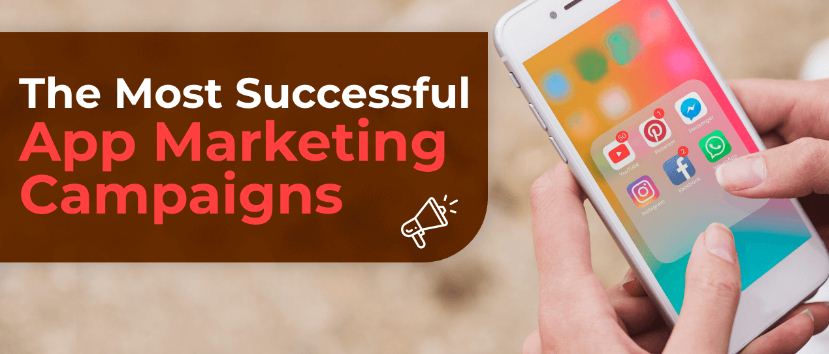
In today’s highly competitive mobile app market, developers invest significant resources in creating exceptional user experiences. However, despite their best efforts, many encounter challenges when it comes to achieving the desired engagement and retention rates for their applications. This discrepancy often stems from a lack of effective mobile marketing campaigns. In this blog, we will explore creative marketing campaigns for iOS apps that can be implemented in iOS apps to address this issue and enhance user engagement and retention.
1. Promotional Campaigns:
Promotional campaigns are an essential aspect of mobile marketing, helping to attract and retain users. Three key promotional campaign strategies for iOS apps include push notifications, emails, and in-app messages. Push notifications allow app developers to proactively reach out to users with personalized messages, updates, and exclusive offers. Emails can be used to send newsletters, product updates, and promotional content, while in-app messages provide an effective way of highlighting new features or limited-time offers, encouraging user engagement.
2. Transactional Campaigns:
Transactional campaigns focus on specific actions within the app, such as signups, in-app purchases, password resets, and receipts. By optimizing these interactions, developers can facilitate a seamless user experience, build trust, and encourage repeat usage. For instance, strategically timed notifications for abandoned carts can prompt users to complete their purchases, while personalized password reset emails ensure that users can easily regain access to their accounts.
3. Onboarding Campaigns:
Onboarding campaigns play a crucial role in welcoming users to the app and educating them on its features and benefits. Incorporating user-friendly tutorials and tooltips can help users navigate the app effortlessly. Additionally, integrating interactive elements, such as gamification techniques or guided tours, can enhance the onboarding experience while keeping users engaged.
4. Opt-In Priming Campaigns:
Opt-in priming campaigns are designed to encourage users to provide explicit consent for receiving marketing communications. By explaining the benefits and value of opting-in, developers can overcome any hesitations users may have. These campaigns can be conducted through targeted in-app messages or push notifications, guiding users towards the opt-in settings and providing relevant context.
5. Triggered Campaigns:
Triggered campaigns are automatic responses triggered by specific user actions or events. For example, if a user has been inactive for a certain period, a triggered campaign can send a personalized push notification reminding them of the app’s benefits and encouraging them to return. By leveraging triggers such as user segmentation, past behavior, or geolocation, developers can target campaigns to ensure maximum relevance and effectiveness.
6. Dynamic Content Campaigns:
Dynamic content campaigns involve the customization of app content based on user preferences, behavior, or location. Through dynamic content, developers can create personalized experiences that cater to individual user needs, enhancing engagement and retention rates. Whether it’s displaying location-specific offers or providing tailored recommendations based on user interests, dynamic content campaigns increase user satisfaction and encourage continued usage.
7. Activity Campaigns:
Activity campaigns focus on stimulating user activity within the app through various incentives, challenges, or rewards. For example, developers can introduce loyalty programs, rewarding users for consistent engagement or encouraging social sharing within the app. By instilling a sense of accomplishment and providing tangible benefits, activity campaigns can motivate users to remain actively engaged with the app.
8. Location-Based Campaigns:
Location-based campaigns leverage the power of geolocation to deliver targeted content and offers based on a user’s physical location. This type of campaign allows developers to connect with users in real-time, providing location-specific information, promotions, or recommendations. For instance, a restaurant app could send a push notification to nearby users offering a time-limited discount or an exclusive menu item, enticing them to visit the restaurant.
9. Re-Permission Campaigns:
Re-Permission campaigns are used to re-engage users who have previously opted out of receiving marketing communications or have become inactive. Through targeted push notifications, personalized messages, or exclusive offers, developers can reignite interest and re-establish a connection with these users. By addressing their concerns or highlighting new and improved features, developers can win back their attention and drive higher engagement.
Summary
When developers invest substantial time and resources in creating exceptional apps, they deserve to see the expected engagement and retention rates. By implementing a strategic combination of mobile marketing campaigns, specifically designed for iOS apps, developers can enhance user experiences, foster user engagement, and boost retention rates. Whether it’s through promotional campaigns, transactional campaigns, or personalized onboarding experiences, the comprehensive analysis of these nine types of mobile marketing campaigns provides an invaluable toolkit for app developers in achieving their desired outcomes. Embracing these campaigns will not only attract and retain users but also establish a strong brand presence and foster ongoing app success.
